Hello, welcome to the official website of Yunnan Shangri-La Balagezong Tourism Development Co., Ltd!

01
2015
-
12
Tibetan Everyday Appliances
作者:
Butter barrel
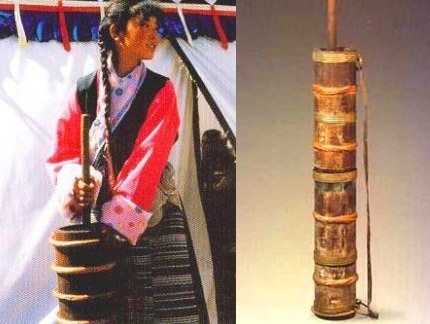
For every Tibetan family, the butter barrel is the most basic daily appliance because they have to use it every day. Butter barrel is divided into two kinds. One is a bucket for lifting butter from milk, called "Xuedong". This bucket is relatively large, about four feet high and nearly one foot in diameter. It is a productive butter bucket often seen in pastoral areas. One is the daily buttered tea barrel, which is called "Jia Dong" in Tibetan ". This barrel is smaller than "Xuedong", about two feet tall and about half a foot in diameter. Some buttered tea barrels are very small, only more than a foot high, which is suitable for carrying out. Butter barrels-whether "snow dong" or "a dong", are generally two components. Part of it is a barrel; part of it is a blender, called "Caro". The production of butter barrels is very exquisite. The barrel is surrounded by wooden boards. The upper and lower diameters are generally large. The periphery is made of copper hoops. The upper and lower ends are made of copper as lace. Various patterns can be made, which is exquisite and generous. The "Jia Luo" of the blender is relatively simple to make. First, make a round board slightly smaller than the barrel mouth, and cut four small holes with a diameter of four centimeters on the board, so that when mixing in the barrel, juice and gas can flow up and down through the holes. The center of the round plate is equipped with a wooden handle half a foot longer than the barrel, and the wooden handle is also used as a copper hoop on the handle part as a decoration for the butter barrel. The wood used to make butter barrels is generally Korean pine, which has no joints. In particular, the red pine in the middle and lower reaches of the Yarlung Zangbo River is a good material for butter barrels. Motuo and other places are rich in thick bamboo. People saw a section and used it as a barrel, which is more convenient.
Wooden bowl
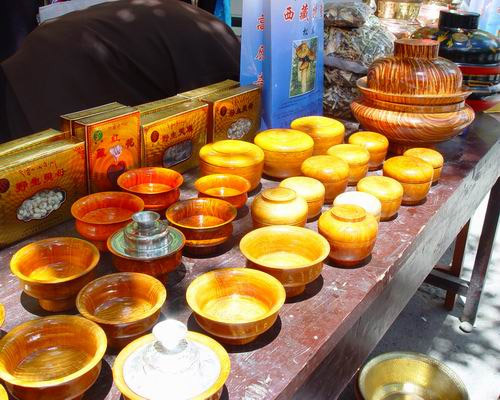
Wooden bowls are the belongings of the Tibetan people. People compare wooden bowls to their lovers and keep them around. Tibetan people go up to the mountains to cut firewood and work in the fields. They all carry wooden bowls in their arms and use them to drink tea and catch Zanba at any time. If you go out as a guest, touch the wooden bowl in your arms, and let the host pour tea and catch Zanba for yourself, it will not be considered rude and ridiculous. The raw materials for making wooden bowls are generally carved from birch, Chengba tree and miscellaneous wood. Miscellaneous wood do wooden bowl, strong texture, not easy to break, fine pattern, more beautiful. Making a wooden bowl is no simple matter. First, to go up the mountain to select materials, trees with large knots and many pimples are preferred. The second is to air dry, and the created tree knots and segments are air dried for about ten days to avoid cracking after being made. The third is to make blanks. The fourth is fine grinding. This process requires fine work to make the surrounding thickness symmetrical, marking accurate and the bottom of the bowl stable. Finally, coloring is generally used in Tibet mountainous area to daub a bowl with fish juice, squeeze inside and inside and inside and outside, become orange, so that the wooden bowl beautiful, fresh color. There are many kinds of Tibetan wooden bowls, including large bowls for catching Zanba, small bowls for drinking butter tea, and covered bowls for storing goods. Wooden bowl is characterized by more convenient and durable, smooth and beautiful, holding food does not change the taste, not hot mouth, easy to carry. The wooden bowl made of miscellaneous wood also has the function of preventing poison.
jade bowl
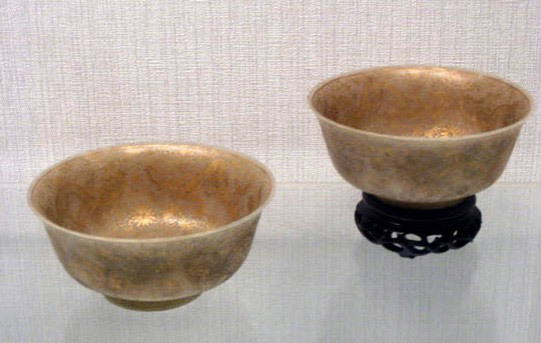
Mention jade bowl, people will think of Riluo Ze Renbu County. Renbu County is rich in jade, and the color is diverse, there are green, green and white. Rich jade deposits make Renbu the home of jade bowls.
The jade bowl of Renbu can be made into various transparent, beautiful, durable and unique bowls after rough beating, fine grinding and carving. With the addition of various patterns carved on the outer wall of the bowl, it becomes a valuable item.
Jade bowl is a kind of handicraft, in addition to practical, more ornamental value. In addition, Renbu County also uses jade to produce more than ten kinds of small supplies such as hip flask, sprinkling cup, snuff box and tsampa box. The jade bowl of Renbu is welcomed by farmers and herdsmen. At present, no neighboring provinces and foreign trade have opened up the market. If they develop in this area, they will have a broader development future.
clay pottery
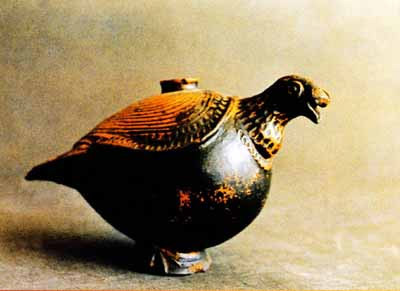
Ceramic production has an ancient history in Tibet. The pottery unearthed at the Karuo site in Qamdo also dates back more than 4,600 years. However, the pottery technology in Tibet has not been well developed. The current pottery production is still limited in variety, and the craftsmanship is also in a manual state. Common pottery includes "Kuoma", which is used to cook "Tuba" and dough. "Zakuo" is a big belly jar with two ears for cooking. "Mei Kuo", a stove for hot rice, hot tea and keeping warm; "Chama", our common tank for making highland barley wine, is just like the wine jar in the mainland. "Palang" for pancakes ", the" Kuo di "for butter tea, the" Mei Duo Kuo Ma "for flowers, the jars for pickling vegetables, and the various hip jugs, etc., are all pottery vessels seen in daily life in Tibet.
waist knife
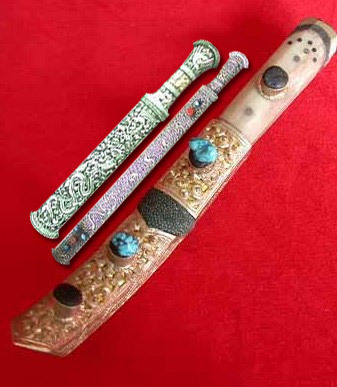
Tibetans generally like to carry knives, especially herdsmen and Kangba people wear long and short knives on their waists. Some people wear a long knife on their waists and a small knife between their waists. The knife has become a keep of the Tibetan people.
Herdsmen use long knives to defend themselves against animals. Farmers and people in forest areas use long knives to chop thorns and reclaim wasteland. They also use knives to cut wood and trim fruit forests. Long knives are widely used in the hands of the Tibetan people. The short knife is also a necessary thing for herdsmen. It can be used to kill animals, peel cattle, sheepskin, cut meat, cut vegetables, etc. Short knives and knives are both daily necessities and decorations, so they are necessary.
The knife has a thousand years of history in Tibet and has become a traditional national special need. It is said that 1,600 or 700 years ago, the Tubo tribe discovered copper, iron, silver and knew how to smelt. From then on, people began to forge waist knives. There are many places producing waist knives in Tibetan areas, and the Tibetan knives produced by Lhasa, Lazi, Dangxiong, Ding Qing, Yi Gong and Ganzi white jade are all very famous. The Tibetan knives in these places have a blade like frost. The handle of the knife is wrapped in bone and wood and inlaid with brass and silver. The scabbard is engraved with patterns such as dragons, phoenixes, tigers, lions and flowers. Some patterns are also dotted with precious stones, agates and other valuables. People's beloved waist knives are beautifully dressed.
Gold and silver utensils
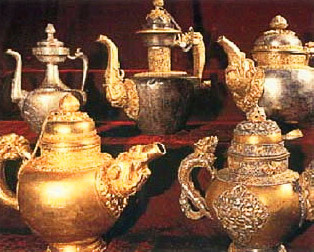
Gold and silver utensils are traditional Tibetan crafts with distinctive national style. In addition to decorations, there are many daily living utensils in Tibet made of gold and silver. There are teapots, saucers and bowl covers made of pure gold and silver on the Potala Palace. Spoons, chopsticks, bowls and plates made of silver are often seen among the people. Tibetan gold and silver utensils are very delicate and exquisite in workmanship. The surface is engraved with dragon, tiger, lion, elephant, phoenix, peacock and other patterns. The patterns are lifelike and exquisitely carved. They are precious art souvenirs. Tibet's gold and silver craftsmen have been handed down from generation to generation, and their technology has reached a superb level. At present, there are still many people engaged in the production of gold and silver utensils.
Carpet
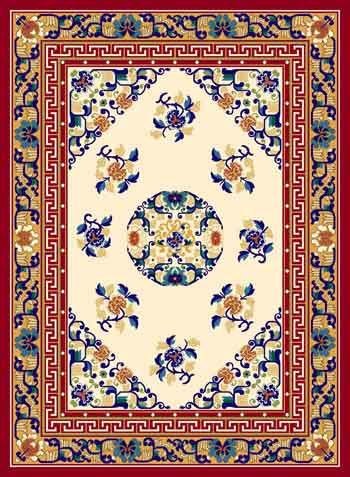
The wool of the Qinghai-Tibet Plateau has the advantages of coarse and hard wool and strong elasticity, which is very suitable for making carpets. The most famous carpet in Tibet is Gyangze carpet. Gyangze carpet has a history of more than six hundred years. It has the characteristics of textile precision, durability, rich national tradition and bright colors. It is welcomed by Chinese and foreign merchants.
Gyangze carpet is also called Gyangze card pad. Generally speaking, those with an area greater than 18 square feet are called carpets. Less than 18 square feet are called card pads. Gyangze carpet was first passed from Gaxi in Gangba County, and later spread from Gyangze to all parts of the region.
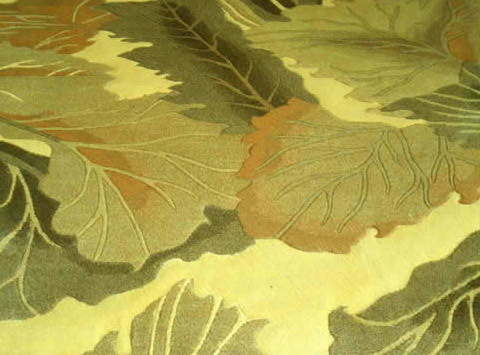
The carpet uses cotton yarn as warp and wool as weft. Dyes in addition to domestic acid dyes, but also with wild plant juice, ore, color soil, etc., with thirty-six different colors. Gyangze carpet is characterized by bright colors, do not fade. The pattern of the carpet was originally dominated by ancient temple murals, mainly including two dragons playing with pearls, flowers, plants, birds and beasts, and ancient landscape paintings. In recent years, Gyangze carpets have made great progress in the variety of designs and colors. They can weave large-scale designs such as the Potala Palace, Mount Everest, the Great Wall, and the Nanjing Yangtze River Bridge, which have been loved and praised by merchants.
Hidden
It is a quilt made of wool and has local characteristics. Tibet is cold and cannot grow cotton, but there is a lot of cattle and wool, so people make full use of local products to weave thin and soft Tibetan quilts. There are generally two-strand, three-strand, four-strand and advanced Tibetan quilts. The light weight of a bed is about 10kg, and the heaviest 25kg can be used for decades. The hidden quilt has the advantages of soft, smooth, thick and warm.
Tibetan Blanket
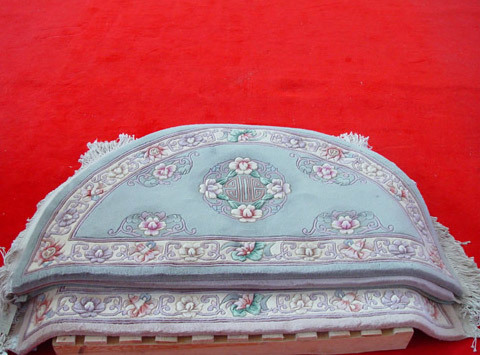
it is called "niansen" in tibetan ". Tibetan blankets are roughly divided into three types. One is the best long blanket woven from yak wool and wool. It can change the style and pattern. It is soft, beautiful and light in weight. It is suitable for use in places with mild climate in southern Tibet. The second kind is woven with sheep's fine wool twisted wool. This kind of Tibetan blanket has two kinds of plain color and pattern. The pattern Tibetan blanket is woven with colored wool. This kind of blanket is also thin and is generally liked by urban residents. The third type is a strong Tibetan blanket made of yak hair and wool blended with strong black and white, which is really good-looking and is very popular with farmers and herdsmen. This kind of Tibetan blanket, relatively thick, wear-resistant dirty, suitable for travel. Pastoral areas use flat thick, warm strong Tibetan blanket as a quilt, mattress, durable.
Cushion
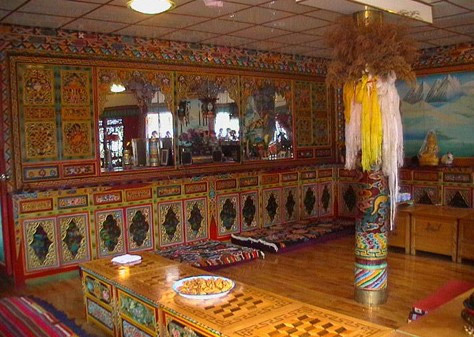
Tibetans generally do not do chairs and stools, but use cushions instead. The mat, called "Bumat" in Tibetan, is generally nearly half a foot high, more than one foot wide and two and a half feet long. It is foreskin made of fine canvas or cowhide and contains roe hair, dry soft grass or highland barley straw. The more exquisite cushion is filled with roe hair and covered with gold satin. There are two, three, four and other mats. Can be used to make a bed. The thin mat can be carried on horseback, laid on the ground during the journey or used as a camp bed at night. The cushion is soft and strong, and warm from the tide. It is suitable for alpine regions. Therefore, in Tibet, where forestry resources are quite rich, people still like to use cushions as chairs.
Wooden furniture
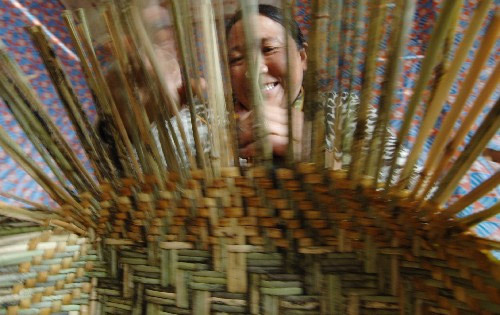
Tibetan wood furniture is a traditional national handicraft, has a long history, roughly divided into two categories of Tibetan cabinets and Tibetan tables. The cabinet has a "hundred posts" for putting books, with upper and lower floors. When there are not many books, the lower floor can put clothes. "Qigang" is a cabinet for food and tea sets. It is four feet long, half a foot wide, one foot high and three 2. high. The cabinet is carved with lacquer paintings and is very gorgeous. Generally like two cabinets of the same style connected furnishings and use.
There are four kinds of Tibetan tables. The small long square table for eating and drinking tea is called "Jue Ze". The one specially used for eating is called "Jiague". It can be converted into one and is convenient to carry. It is called "De Bujue". It is specially used to play cards ". The characteristics of the Tibetan table are that the table is similar to the cabinet, with short legs and only a few rains. The table is more than 2 feet high, with wood on three sides and two doors on one side. Generally, the door has no handle, so it looks like a square cabinet. Another feature of Tibetan wood is that there are all kinds of flowers, figures, animals, cranes, longevity stars on the surface, and there are patterns such as back patterns and bamboo knots around. The color is bright and moving, and it looks very rich.
Bamboo ware
Tibet Nyingchi, Milin, Loeb, Motuo, Chayu and other places are rich in bamboo, so Tibetans, Menba, Lhoba, Sherpa and Li Ba have many people who are good at weaving bamboo wares. Tibetan bamboo variety, can be divided into two categories. One is daily necessities, such as bamboo boxes, scabbard, dustpan, etc. The other is production utensils, such as sieves, baskets, baskets, baskets, baskets, chicken cages, fish cages, etc. The Lhoba people also use bamboo to make bows and arrows. The daily necessities of Tibetan bamboo ware are of meticulous workmanship and exquisite editing method. Various patterns can be made on the box.
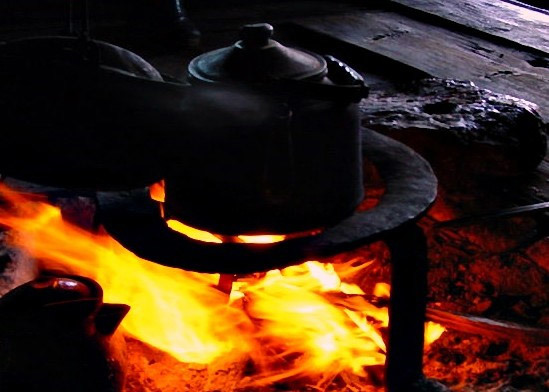
Air bladder
Tibetan wind bag has a unique place, although it is a blast appliance, but different from the mainland wood bellows. All are made of sheepskin, more convenient and small volume. Tibetan wind bag is round, with iron wind pipe and skin wind bag. When blowing the air with two hands pull together or hand pressure air bag, the wind will be blown through the duct into the charcoal fire or cow dung fire. This kind of air bag is strong and durable, portable and widely used.
Wuduo
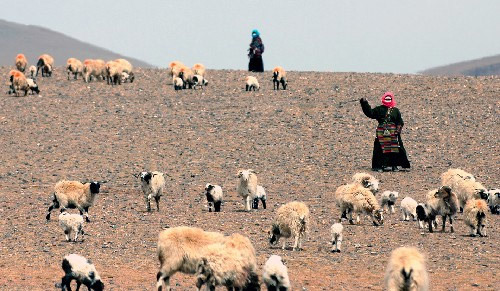
Other ethnic groups graze cattle and sheep with whips, while Tibetan herders do not use whips, but use "Wuduo".
Wuduo is made of yak hair twisted into coarse wool, and then woven into a hair braid. There is a collar with a diameter of 3 inches at the upper end of the braid. When in use, the collar is put on the middle finger, and a palm-sized oval "black ladder" is made in the middle, which is used to put stones and clumps, and the end is made of wool as whip tip.
If you want to drive cattle and sheep, hold both ends of Wuduo with your hand, put stones or clumps of earth in the "Wuti", swing the whip, and then let go of one end. The stones will fly to tens of zhangs or even 1. 200 zhangs away, making the head animals change direction. Herdsmen have a high ability to use Wuduo. Some people can hit a hundred rounds at a distance of more than 100 zhangs. Therefore, Wuduo is not only used to drive animals, but also used to drive wild animals. In the anti-British struggle decades ago, Wuduo was still a powerful weapon for the Tibetan people to fight the invaders!
最新动态
2022-08-23
The current outbreak, the responsibility is on the shoulder, Balagzon in action!
Since the outbreak of the epidemic in Tibet on August 7, 2022, a large number of tourists from Tibet to Yunnan have entered Shangri-La from National Highway 214. The People's Government of Diqing Prefecture has issued a series of relevant policies and measures and actively responded. Medical staff, police and other front-line personnel stick to the front line, have been involved in the "war of resistance" of the epidemic without gunpowder smoke, and jointly participate in dealing with a major public health security incident faced by mankind.



